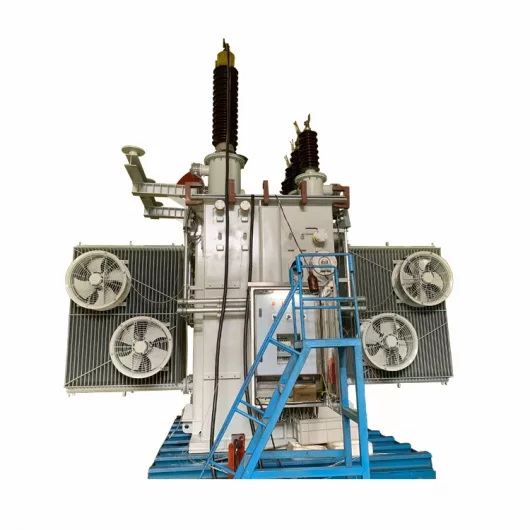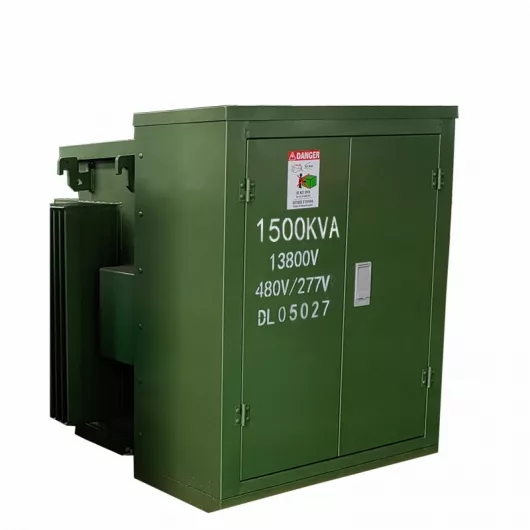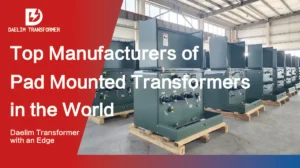
How to Choose Pad Mounted Transformer?
Table of Contents Selecting the right pad-mounted transformer requires careful consideration of several critical factors, as these ground-mounted distribution transformers play a vital role
ELECTRIC, WITH AN EDGE
In oilfield ground construction projects, oil-immersed power transformers are mostly used. The model is mostly S11-M. This model is a fully-sealed oil-immersed power transformer. That is, from the appearance point of view, there is no oil pillow on the traditional transformer. Transformers are used more and more widely because of their high reliability, long service life, and simple operation and maintenance.
A Complete Guide to Oil Immersed filled Distribution Transformer
In oilfield surface construction projects, the voltage levels of dual-winding oil-immersed power transformers are mainly 10/0.4kV, 35/10(6)kV, 110/35kV, etc. This article focuses on the selection of 10/0.4kV oil-immersed power transformers in oilfield surface construction.
Distribution Transformer Solution for Papermaking Enterprises
Distribution Transformer Capacity Solution for Processing Factory
The insulating medium of dry-type power transformer is resin or paper and insulating paint, and the cooling method is self-cooling and air-cooling. Its advantages are maintenance-free, lighter weight, impact resistance, convenient handling, etc., but its disadvantages are limited capacity, low overload capacity, and high cost. Generally, it is installed indoors and arranged in the same room as the low-voltage power distribution cabinet. It is mostly used in indoor places such as hotels, office buildings, and high-rise buildings.
The insulating medium of oil-immersed power transformers is transformer oil, and the cooling methods include self-cooling, air-cooling, and forced oil circulation cooling. Its advantages are good cooling effect, wide application range of capacity, high overload capacity, high operation stability, low price, etc. The disadvantage is that it is not easy to carry. Generally installed in a separate transformer indoor or outdoor.
The number of installed power transformers should be selected according to load characteristics and economic operation. When one of the following conditions is met, two or more transformers should be installed:
According to the above selection principle: the first-level electrical load in the oilfield station uses a dual power supply, and two transformers are selected; the second-level electrical load uses a dual-circuit power supply, and two transformers are selected; the third-level electrical load uses a single power supply. , Choose to install a transformer.
The types of oilfield stations are mainly divided into several types: joint stations (also known as centralized oil and gas treatment stations), crude oil transfer stations, sewage treatment stations, water injection stations, metering stations, sewage lifting stations, etc. In addition, mechanical oil production wells are common.
The capacity of the power transformer should be selected according to the following principles:
(1) The transformer capacity should be selected according to the calculated load. The calculation of the calculated load generally adopts the need factor method.
(2) According to the results of load calculation, when a single transformer is selected, the load rate of a single transformer is generally 60%-85%.
(3) According to the results of the load calculation, when selecting two transformers, the load rate of a single transformer is generally 55%-70%, and for transformers with a larger primary and secondary load ratio, it can be 50%.
(4) For stations with electrical loads for fire pumps, the calculated loads in the stations should be calculated separately according to the following methods, and the larger value should be used to calculate the transformer capacity:
(5) When determining the configuration plan of the pumping unit well transformer, the transformer should be selected based on the well spacing and the pumping unit motor capacity, and after technical and economic comparison, the average load rate of the pumping unit transformer should not be less than 30%.
When the motor is started, the voltage on the distribution bus should meet the following requirements:
The calculation of the voltage drop when the motor starts is mainly in the following two situations: one is powered by a system with infinite power capacity (ie, system voltage power), and the other is powered by a system with limited power capacity (ie, generator power).
The following focuses on the method of verifying the voltage drop of the system with infinite power capacity.
As we all know, the common starting methods of motors are full voltage starting, soft starter starting and variable frequency starting. When the motor is started at full voltage, the starting current is 5-7 times the rated current of the motor; when the soft starter starts, the starting current is 2 to 5 times the rated current of the motor; when starting with a variable frequency, the starting current is equal to the rated current of the motor.





Table of Contents Selecting the right pad-mounted transformer requires careful consideration of several critical factors, as these ground-mounted distribution transformers play a vital role

The primary function of the pad mounted transformer is to serve as a critical distribution transformer that steps down higher primary voltage from utility distribution

A pad mounted transformer operates through electromagnetic induction, serving as a crucial distribution component that converts high voltage electricity to lower, usable voltages for residential

When looking for the best pad-mounted transformer manufacturer, it’s important to find industry leaders known for reliability and innovative solutions. Pad-mounted transformers are essential in
After filling in the contact information, you can download the PDF.
6 Responses
I every time used to study article in news papers but now as I am a user of net thus from now I am using net for posts,
thanks to web.
I didn’t know that transformers are classified its purpose. That would make my life a lot easier. I could find the right one super fast.
A fascinating discussion is worth comment. I do think that you should write more
about this issue, it might not be a taboo matter but generally people don’t
discuss these issues. To the next! Kind regards!!
Thanks
I like how you mentioned that the transformer should be chosen based on the well spacing when planning the configuration plan of the pumping unit. My uncle mentioned to me last night that his friend is hoping to find a transformer for his upcoming project and asked if I have any idea what is the best option to do. Thanks to this informative article and I’ll be sure to tell him that they can consult a well-known transformer supplier company as they can answer all their inquiries.
Thanks a lot